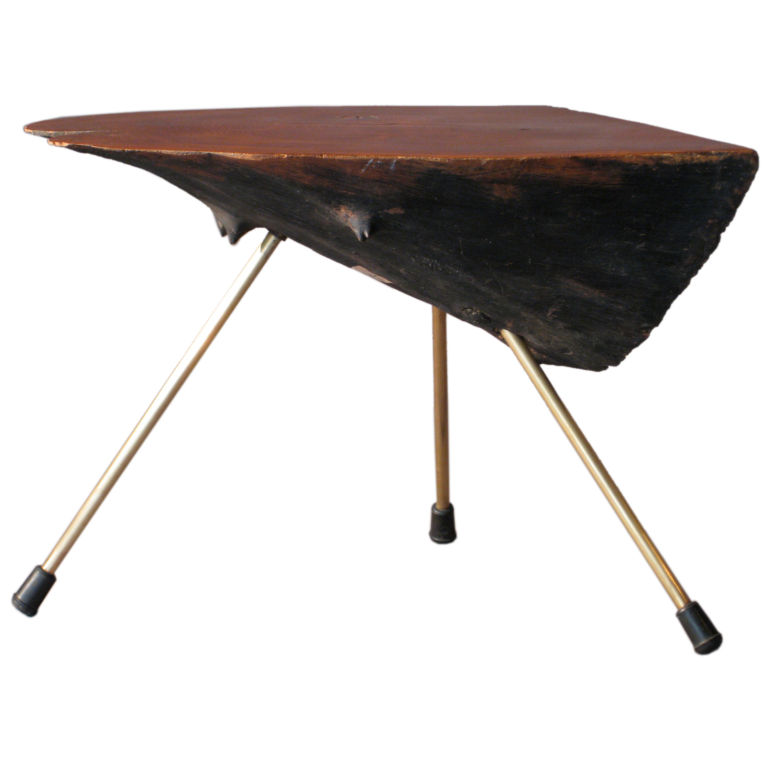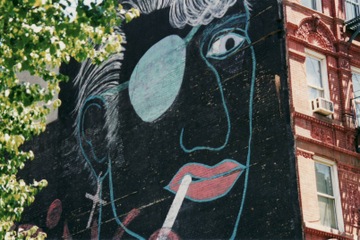Schwarz
View current page
...more recent posts
hoarders need to meet the pickers
void house
via justin
captain organic ross lovegrove
via vz
no photo 303 glry
via afc
on talking to plants - plant perception (paranormal)
A. Brayman’s RAD lamp
via reflib

carl aubock architonic, 1st dibs, design and fun and sigmar via reference library
sound portrait archive
via vz
This one-of-a-kind siding product comes from olive tanks fabricated by the George Windeler Company of San Francisco in the 1930s. The unique charcoal-grey patina and surface texture comes from decades of exposure to the hot dry summers and chilly wet winters of California’s Central Valley. Once oiled, this material turns a deep ebony with burgundy undertones and reveal.via vz
These unique redwood crescents come from vintage wine tank bottoms. Wine tank redwood is prized for its clarity, grain, patina and 'flavorful' history. A deep, rosy hue from decades steeped in wine gives this already special material additional beauty and prestige. The as-is weathered surface of this wood has been darkened to a charcoal-amber appearance by decades of exposure to sun, wind and rain – the same rarefied climate that produces California wine grapes. The interior face of this wood is marked by crystallized wine residue. Once remilled and oiled, it reveals a rich burgundy luster. This material is well-suited for a variety of applications, including furniture, shelving and finish installations.
out of print
via vz
homes less than 30K
27k easton pa (keep out) brick building
drive a tank
via vz
what to do when the drummer doesnt show up
Diggers and Dreamers: A Directory of Alternative Living in Britian
colin ward / walter segal and the self-built housing movement
into production (maria gough the artist as producer)
Boris Groys The Obligation to Self-Design
At the same time, the project of Russian Constructivism was a total project: it wanted to design life as a whole. Only for that reason—and only at that price—was Russian Constructivism prepared to exchange autonomous art for utilitarian art: just as the traditional artist designed the whole of the artwork, so the Constructivist artist wanted to design the whole of society. In a certain sense, the artists had no choice at the time other than to announce such a total claim. The market, including the art market, was eliminated by the Communists. Artists were no longer faced with private parties and their private interests and aesthetic preferences, but with the state as a whole. Necessarily, it was all or nothing for artists. This situation is clearly reflected in the manifestos of Russian Constructivism. For example, in his programmatic text entitled "Constructivism," Alexei Gan wrote: "Not to reflect, not to represent and not to interpret reality, but to really build and express the systematic tasks of the new class, the proletariat... Especially now, when the proletarian revolution has been victorious, and its destructive, creative movement is progressing along the iron rails into culture, which is organized according to a grand plan of social production, everyone—the master of color and line, the builder of space-volume forms and the organizer of mass productions—must all become constructors in the general work of the arming and moving of the many-millioned human masses."4 For Gan, the goal of Constructivist design was not to impose a new form on everyday life under socialism but rather to remain loyal to radical, revolutionary reduction and to avoid making new ornaments for new things. Hence Nikolai Tarabukin asserted in his then-famous essay "From the Easel to the Machine" that the Constructivist artist could not play a formative role in the process of actual social production. His role was rather that of a propagandist who defends and praises the beauty of industrial production and opens the public's eyes to this beauty.5 The artist, as described by Tarabukin, is someone who looks at the entirety of socialist production as a ready-made—a kind of socialist Duchamp who exhibits socialist industry as a whole as something good and beautiful.
The modern designer, whether bourgeois or proletarian, calls for the other, divine vision: for the metanoia that enables people to see the true form of things. In the Platonic and Christian traditions, undergoing a metanoia means making the transition from a worldly perspective to an otherworldly perspective, from a perspective of the mortal body to a perspective of the immortal soul. Since the death of God, of course, we can no longer believe that there is something like the soul that is distinguished from the body in the sense that it is made independent of the body and can be separated from it. However, that does not by any means suggest that a metanoia is no longer possible. Modern design is the attempt to bring about such a metanoia—an effort to see one's own body and one's own surroundings as purified of everything arbitrary, tasteful, and earthly. In a sense, it could be said that modernism substituted the design of the corpse for the design of the soul.
Architecture Without Architects—Another Anarchist Approach
The title of this text is a hybrid of two existing titles. “Architecture without Architects” was the name of an influential exhibition by the architect Bernard Rudofsky at the MoMA in 1964; “Housing: An Anarchist Approach” was the name of a famous book by the English architect and anarchist Colin Ward in which the author proclaims the rights and productivity of self-built housing and squatting in postwar Europe. Whereas the latter’s collection of essays discussed specific cases of European and Latin American squatter movements from the 1940s to the 1970s, Rudofsky’s exhibition presented photographs of local vernacular architecture from all over the world, with the claim that architects should learn from premodern architectural forms. Both of these perspectives identify a condition that emerged during decolonization, in which a massive crack appeared in the modernist movement and its vision of top-down planning. But they were also two very different interpretations of the simple fact that, throughout the ages and around the world, architecture has been produced without the intervention of planners or architects. Whereas Rudofsky’s approach suggested an aesthetical and methodological shift, Colin Ward’s was a political reading of spatial self-expressions that might offer new methodologies and an alternative understanding of society. In my article, after more than thirty years of debates about High Modernism, I will try to bring into play a third way of thinking that attempts to connect the question of design with that of the political, from the perspective of a globalized world.
rip dale hawkins (author susie q)


